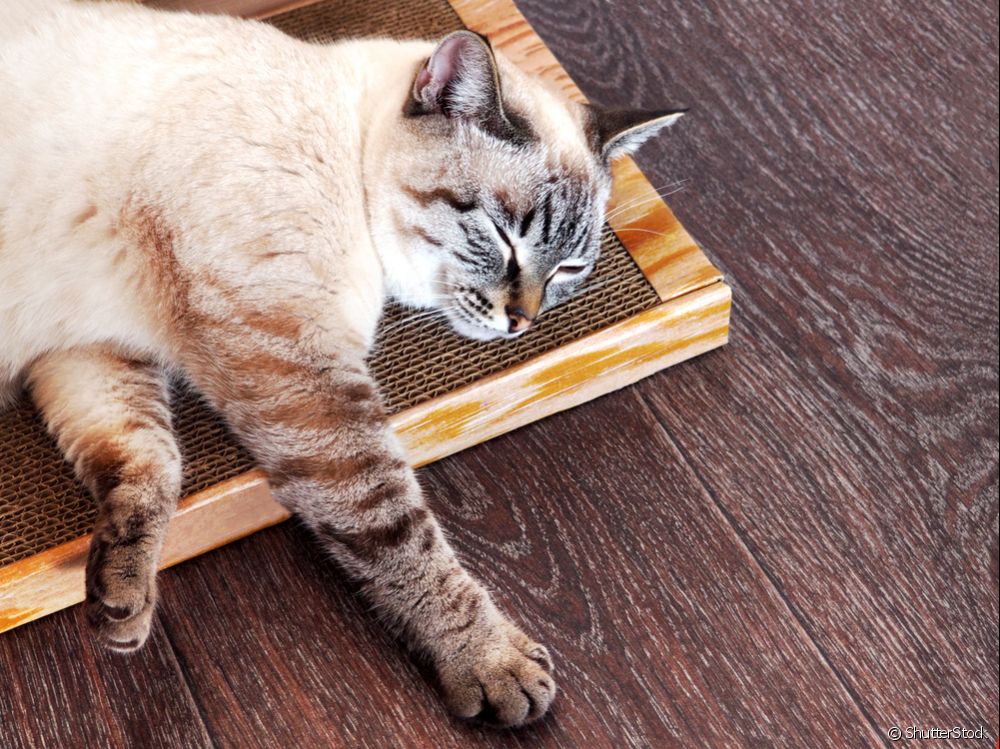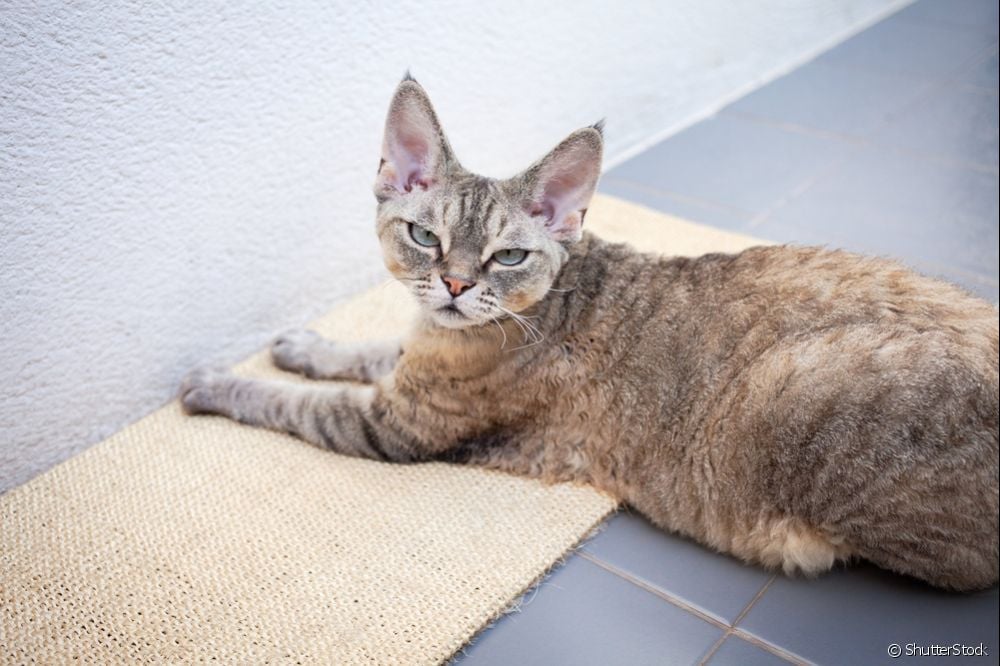How to make a cat scratcher? 3 ideas for you to put into practice in your home

Table of contents
Every feline owner knows - or should know - that having a cat scratcher at home is essential. In addition to providing more quality of life for the animal, it is an item that helps prevent the dreaded scratches on sofas, chairs, mattresses and armchairs. The cat scratcher can be found easily and with a variety of prices, but it is still not usually a cheap object. The good news is that it isit is possible to make one at home by spending little and using your creativity. So, we have separated 3 ideas for you to learn how to make cat scratching posts!
Cat scratcher: what do you need to consider before making one?
The first thing you need to consider before making your own cat scratcher is the age of your kitty. A kitten, for example, has more fragile paws and nails, as it is still growing, and some materials may end up hurting or trapping the claws. If your cat is more active, you can suddenly think of a vertical scratcher model that allows climbing.
It is also important to understand that scratching things is part of the natural behavior of kittens and goes beyond trimming their nails. So, even if your cat is quieter and does not destroy your furniture, it is important to invest in this object, at least so that he has more quality of life. Surely he will be happy with the novelty!
1) How to make cat scratching posts from cardboard?

This is the easiest and cheapest cat scratching post to make - you probably already have the cardboard at home. To make this toy, you will need:
Cardboard cut into strips;
Hot glue;
A whole cardboard box (but you can use a shoebox or wooden box);
Ruler;
Stylus;
Take the cardboard, shoe or wooden box and customize it as you prefer. You can let your creativity run wild, whether covering it with contact paper or painting your kitten's name. After making this scratcher base, take the length and height measurements with a ruler. This will serve as a reference for you to cut the cardboard into strips with the help of a stylus. After cutting the cardboard,use the hot glue to glue the strips to the base. It is important that you cut out enough strips to fill the entire inside of the box. Let it dry and offer it to your kitten. You can stick it on the wall, lean it on some furniture or even leave it on the floor.
2) How to make a cat scratcher from sisal

Sisal is a very thin (and very cheap) rope that can be scratched by cats. With this material, you can put your creativity into play and explore many possibilities. Here, we will teach you a model with a round shape. You will need:
Roll of sisal rope;
A base for the scratcher, it can be a sheet of MDF or wood or even a thick cardboard cut out;
A "skeleton" for the scratcher: this can be a plastic or PVC pipe, tree trunk or a thicker cardboard roll;
Plush or velvet fabric;
Hot glue;
Scissors or stiletto;
Toys: feathers, mice, balls or wands.
To make this type of scratcher, you need to be patient. It takes a little more work than the cardboard scratcher, but it's worth it because your kitten will surely be delighted with the result.
See_also: What is a dog's moustache for? Learn all about dogs' vibrissaeFirst, decide how you're going to make the base of the scratching post. To do this, take into account the age and activity level of your kitten. If you're going to use wood, for example, you have to be careful to cover all parts of the material, as the cat can scratch the wood and hurt itself with splinters. It's worth researching calmly about the base of this type of scratching post to then follow the stepstep by step:
Step 1: With the base of the scratcher chosen, it's time to make the toy more cozy for the kitty. You can make the base of sisal, but how about innovating and putting a fabric for your kitten to lie on? Take the hot glue and start gluing the chosen cloth to the base of the scratcher.
Step 2: Glue the skeleton of the scratcher to the base. Remember that it should be smaller than the size of the base so that the animal has somewhere to lie down. With the structure glued, start covering the tower with the sisal. This process may take a while, but it is important that you secure the sisal well and leave the rope well together.
Step 3: Place some toys between the sisal strings. You can attach a wand with feathers and balls - this will stimulate the animal to use the accessory! Glue all the sisal until it completely covers the skeleton of the scratcher. Let it dry and show your kitten this gift!
3) Scratcher: cat will love this model made with carpet or velcro

This scratcher model is so simple to make that you will need almost nothing: just a base for the scratcher, hot or white glue and a carpet tile or Velcro. The base can be made of wood or MDF, but you can also use a sturdier cardboard box.
After choosing the base, glue the carpet tile or Velcro to the structure. Let it dry and it's ready for your cat to use. The advantage of this type of cat scratcher is that you can place it anywhere. One tip is to place it on the sides of the sofa, a very common place to receive feline scratches.

